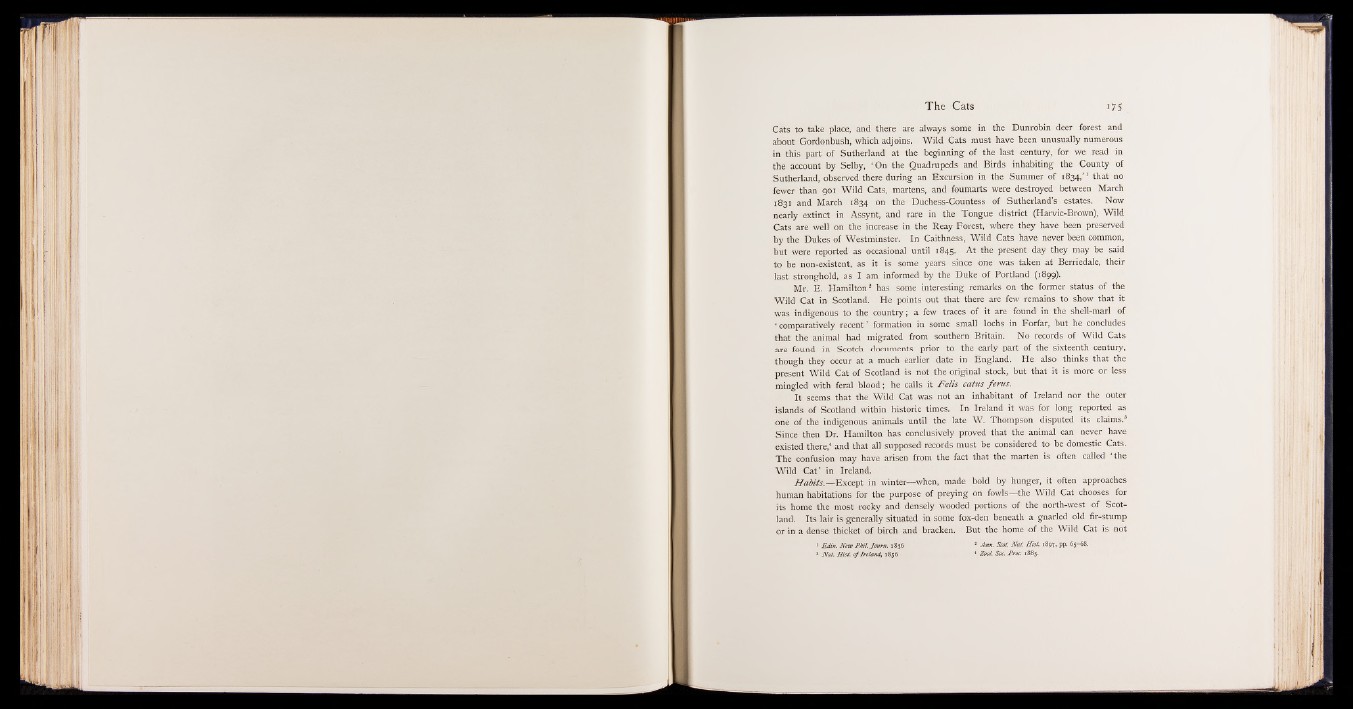
Cats to take place, and there are always some in the Dunrobin deer forest and
about Gordonbush, which adjoins. Wild Cats must have been unusually numerous
in this part of Sutherland at the beginning of the last century, for we read in
the account by Selby, ‘ On the Quadrupeds and Birds inhabiting the County of
Sutherland, observed there during an Excursion in the Summer of 1834,’ 1 that no
fewer than 901 Wild Cats, martens, and foumarts were destroyed between March
1831 and March 1834 on the Duchess-Countess of Sutherland’s estates. Now
nearly extinct in Assynt, and rare in the Tongue district (Harvie-Brown), Wild
Cats are well on the increase in the Reay Forest, where they have been preserved
by the Dukes of Westminster. In Caithness, Wild Cats have never been common,
but were reported as occasional until 1845. At the present day they may be said
to be non-existent, as iti -is some years since one was taken at Berriedale, their
last stronghold, as I am informed by the Duke of Portland||899).
Mr. E. Hamilton2 has some interesting remarks on the former status of the
Wild Cat in Scotland. He points out that there are few remains to show that it
was indigenous to the country; a few traces of it are found in the shell-marl of
'comparatively recent’ formation in some small lochs in Forfar, but he concludes
that the animal had migrated from southern Britain. No records of Wild Cats
•are found in Scotch documents prior to the early part of the sixteenth century,
though they occur at a much earlier date in England. He also thinks that the
present Wild Cat of Scotland is not the original stock, but that it j||more or less
mingled with feral blood; he calls it F elis catus feru s.
It seems that the Wild Cat was not an inhabitant of Ireland nor the outer
islands of Scotland within historic times. In Ireland it was for long reported as
one of the indigenous animals until the late W. Thompson disputed its claims.'
Since then Dr. Hamilton has conclusively proved that the animal can never have
existed there,* and that all supposed records must be considered to be domestic Cats.
The confusion may have arisen from the fact that the marten is often called ‘ the
Wild Cat’ in Ireland.
Habits.— Except in winter— when, made bold by hunger, it often approaches
human habitations for the purpose of preying on fowls—the 5Vild Cat chooses dor
its home the most rocky and densely wooded portions of the north-west of Scotland.
Its lair is generally situated in some fox-den beneath a gnarled old fir-stump
or in a dense thicket of birch and bracken. But the home of the Wild Cat is not
1 Edin. New P hil. Joum. 1836
3 Nat. Hist, o f Ireland^ 1856
* Ann. Scot. Nat. Hist. 1897, pp. 65-68.
4 Zool. Soc. Proc. 1885.